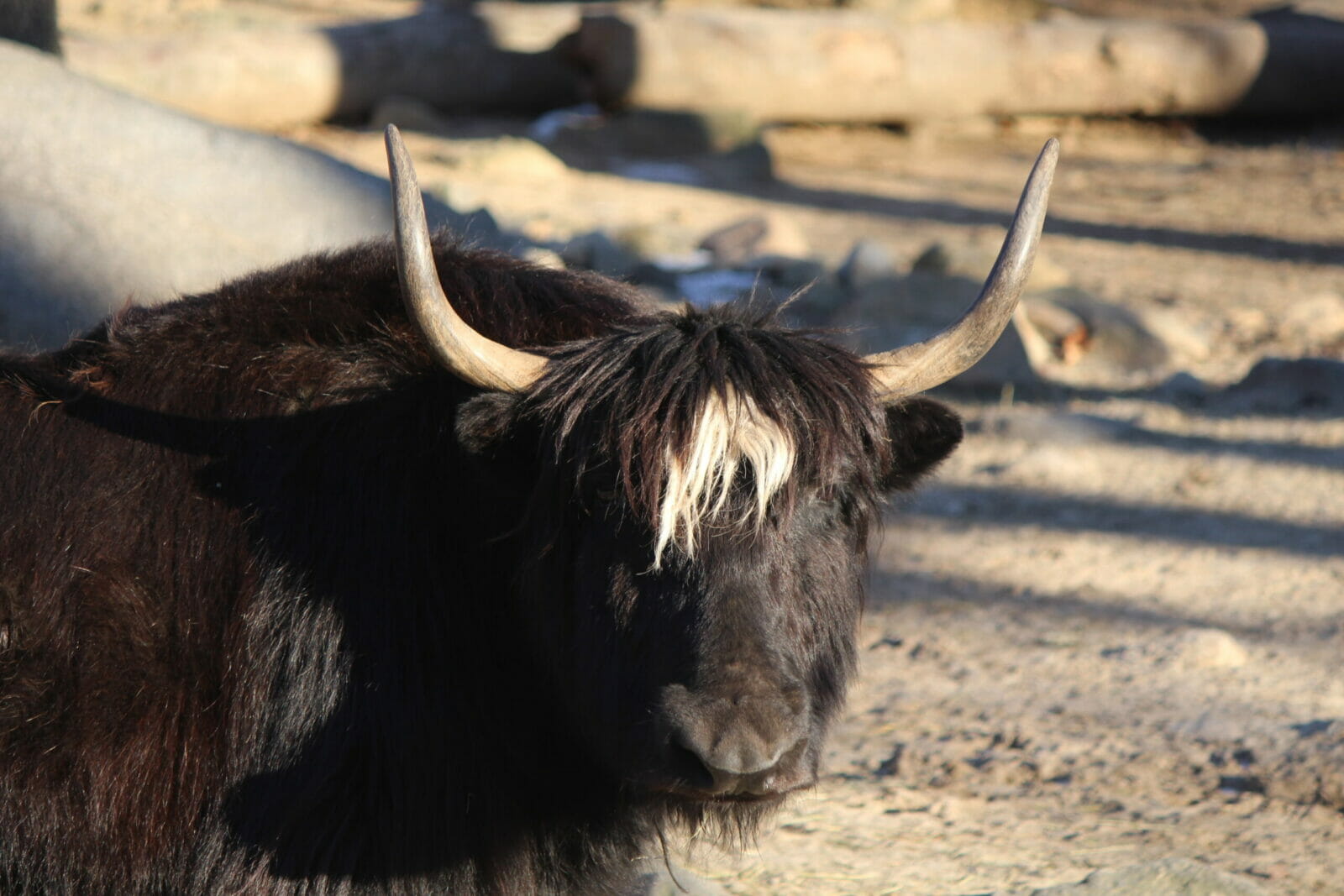
Yak (domestic)
Bos grunniensClass: Mammalia Order: Artiodactyla Family: Bovidae
Size
Size (Males): 1500-1800 lbs
Size (Females): 600-800 lbs
Lifespan
20 years
Diet
Yaks are herbivores and eat grass, moss, shrubs, and other vegetation.
Habitat & Range
Tundra and cold mountainous areas in Tibet and India
Interesting Facts
- Yaks were first domesticated about 3,000 years ago. They were an important part of the lives of the native Tibetan people. They used yaks for their meat, milk, and wool.
- Domestic yaks are smaller than their wild counterparts, and their coats have more varied coloration. Dometic yaks are also known to be more vocal than wild yaks, and bos grunniens translates to “grunting ox”. The species name for the wild yak, bos mutus, means “mute ox”.
- Yaks can survive extreme temperature changes. They have dense, shaggy, woolly fur that keeps them warm in cold, harsh climates. A yak’s feet has large two toed hooves tohelp distribute their weight whn walking on snow.
- Yaks have evolved a number of ways to keep warm in frigid temperatures. It is believed that the vegetation they eat ferments in their stomachs at 104°F. This provides them with an “internal furnace” to warm them from the inside.
Conservation Status
Least Concern
Threats
Domestic yaks are common, however the wild species is listed as vulnerable. ild yaks are threatened by poaching, loss of habitat, and diseases introduced by livestock.
